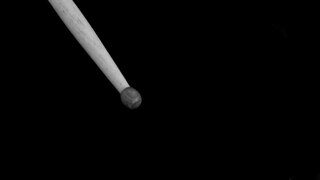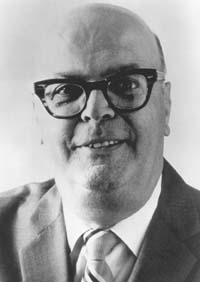Related Research Articles

The snare is a percussion instrument that produces a sharp staccato sound when the head is struck with a drum stick, due to the use of a series of stiff wires held under tension against the lower skin. Snare drums are often used in orchestras, concert bands, marching bands, parades, drumlines, drum corps, and more. It is one of the central pieces in a drum set, a collection of percussion instruments designed to be played by a seated drummer and used in many genres of music.

Snare technique is the technique used to play a snare drum.

A drum roll is a technique used by percussionists to produce a sustained sound for the duration of a written note.
All drum figures are based upon three fundamental beats, technically called roll, single stroke, and flam...Sustentation is accomplished upon wind instruments by blowing into the instrument; it is accomplished upon the violin and the allied instruments by drawing the bow across the string; it is accomplished upon the drum and allied percussion instruments by the roll.
THE SNARE DRUM ROLL.
The roll consists of an even reiteration of beats sufficiently rapid to prohibit rhythmic analysis. To produce an impression of sustentation, these beats must be absolutely even both in power and in sequence. Uneven beats in a roll destroy the impression of sustentation. Evenness is then the primary quality to strive for in roll; speed is the secondary quality to strive for.
There are two possible ways of producing an absolutely even sequence: (1) hand alternation of single stroke and (2) hand alternation of double strokes...The snare drum roll is produced by hand alternation of double strokes.
The "open roll" is produced by [initially] slow hand alternation. Two strokes in each hand alternately are produced by wrist movement and each beat should follow its predecessor in clock-like precision.

In rudimental drumming, a form of percussion music, a drum rudiment is one of a number of relatively small patterns which form the foundation for more extended and complex drumming patterns. The term "drum rudiment" is most closely associated with various forms of field drumming, where the snare drum plays a prominent role. In this context "rudiment" means not only "basic", but also fundamental. This tradition of drumming originates in military drumming and it is a central component of martial music.
Open, closed, open is a technique of playing snare drum rudiments, especially used during auditions or classical practice routines.
Mitchell Thomas Peters was a principal timpanist and percussionist with the Los Angeles Philharmonic Orchestra. He composed well-known pieces for the marimba such as "Yellow After the Rain" and "Sea Refractions"; it is said that these works were composed because Peters felt that there was a lack of musically interesting material that would introduce his students to four-mallet marimba techniques.
Mitch Markovich is an American percussionist, composer, educator, and clinician in the areas of rudimental drumming, marching percussion, drum and bugle corps, and marching band. He is best known for his intensive marching snare drum solo compositions and record-setting performances, entitled "Tornado" and "Stamina", and for his percussion quartet composition entitled "Four Horsemen". Markovich's contributions to the style, notation, composition, and performance of percussion have endured over the last five decades.

Frank Arsenault was an internationally known American percussionist, teacher, and clinician in the areas of marching percussion, rudimental drumming, drum and bugle corps, and marching band. He was a full-time Staff Clinician and Educational Field Representative for the Ludwig Drum Company. He is also well known in his field for his signature playing style, for his many championship titles, and for his recording of The 26 Standard American Drum Rudiments and Selected Solos.

Peter Charles "Pete" Magadini is an American drummer, percussionist, educator and author. He is known for his body of work concerning the comprehension and execution of musical polyrhythms, especially the books The Musician's Guide to Polyrhythms and Polyrhythms for the Drumset. Magadini has recorded and performed with George Duke, Diana Ross, Bobbie Gentry, Al Jarreau, Buddy DeFranco, John Handy and Mose Allison.
Charles "Charley" Wilcoxon was an American drum teacher and drum method book writer. He wrote several influential books on rudimental drumming that are still used by drum teachers today. He is a member of the Percussive Arts Society Hall of Fame.
Percussive Arts Society (PAS) is a non-profit organization for professional percussionists and percussion educators. It was founded in 1961 in the United States and has over 5,000 members in 40 American chapters, with another 28 chapters abroad. It is headquartered in Indianapolis. PAS hosts a large convention annually for artists, students, and educators called the Percussive Arts Society International Convention (PASIC). The convention has been running yearly since 1976.
Fritz Berger was a Swiss drum teacher and drum method book author. He wrote several influential books on Swiss rudimental drumming, or Basler Trommeln, that are still thought of as the authoritative sources for Swiss drumming in America.

William F. Ludwig was an American percussionist, drum-maker, and founder of Ludwig Drums. He helped to create the National Association of Rudimental Drummers and is a member of the Percussive Arts Society Hall of Fame.

Claus Hessler, also spelled Claus Heßler, is a German drummer, author, and teacher. He is a clinician who specializes in Open-handed drumming and rudimental drumming, especially Basel Drumming and Moeller method.
John Wooton is an American percussionist, drummer, and professor of percussion. He is the director of percussion studies at the University of Southern Mississippi and has written two books on rudimental drumming.
The National Association of Rudimental Drummers is an organization created to encourage the study of rudimental drumming. NARD is responsible for the creation of the Standard 26 American Rudiments.
Joseph Burns Moore was a champion rudimental snare drummer, member of the Connecticut National Guard, instructional author, and founding member of the National Association of Rudimental Drummers.
Alfons Grieder was a Swiss rudimental drummer who spread awareness of the Basel Drumming style in America during the mid to late 20th century through his traveling, teaching, and publications.
John Sterling "Jack" Pratt (1931–2020) was an American Army drum instructor at West Point as well as a celebrated rudimental book author. Pratt produced several volumes of rudimental solos and instructional materials and was also the founder of the International Association of Traditional Drummers (IATD), a member of the National Association of Rudimental Drummers (NARD), a member of the United States Association of Rudimental Drummers (USARD), and was inducted into the Percussive Arts Society (PAS) Hall of Fame and the World Drum Corps Hall of Fame.
Edward B. Straight was an American drummer, founding member of the National Association of Rudimental Drummers, and author of several instructional drum books in the early days of drum kit playing.
References
- 1 2 3 "Five Minutes With...Jay Wanamaker, President/CEO, Roland Corp. U.S." msretailer.com. Retrieved 2020-02-07.
- 1 2 3 "Jay Wanamaker | Oral Histories". NAMM.org. Retrieved 2020-02-07.
- ↑ Carson, R., Wanamaker, J., et al. International Drum Rudiments. Alfred Music Publishing, 1997.
- ↑ Wanamaker, Jay. Championship Corps-Style Contest Solos: For the intermediate-advanced snare drummer. Alfred Music, 1984.
- ↑ "Books by Jay Wanamaker (Author of Drum Rudiment Dictionary)". goodreads.com. Retrieved 2020-02-07.
- ↑ Wanamaker, Jay, et al. Championship Auxiliary Units Alfred Music, 1979.
- ↑ Carson, Rob and Wanamaker, Jay. International Drum Rudiments Alfred Music, 1994. DVD recording.
- ↑ Wanamaker, Jay. Alfred's Rudimental Duets: For Intermediate Snare Drummers Alfred Music, 1995.
- ↑ Wanamaker, Jay. Alfred's Rudimental Contest Solos: For the Intermediate Snare Drummer. Alfred Music, 1995.
- ↑ Black, D. Feldstein, S. and Wanamaker, J. Alfred's Intermediate Snare Drum Solos: 22 Intermediate-Level Contest Solos Alfred, 1998.
- ↑ Wanamaker, Jay.Drum Rudiment Dictionary: A Complete Reference Guide Containing the Percussive Arts Society's 40 International Drum Rudiments Alfred, 2002.